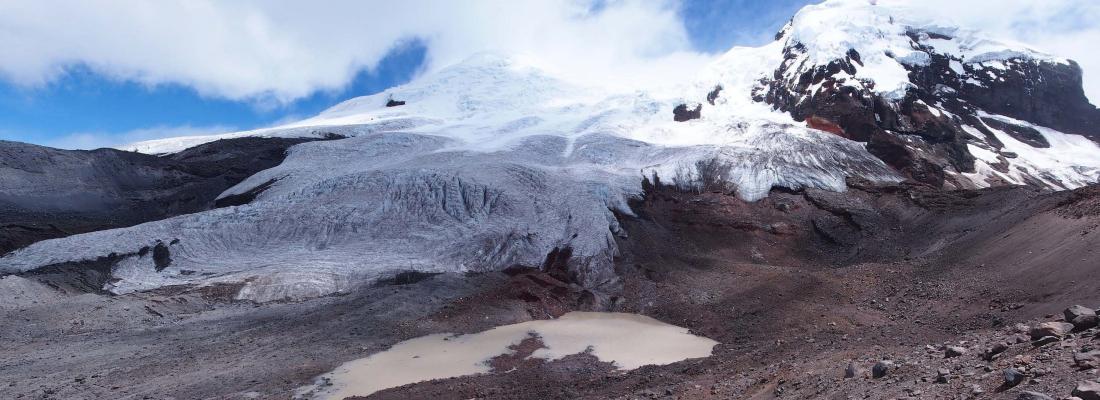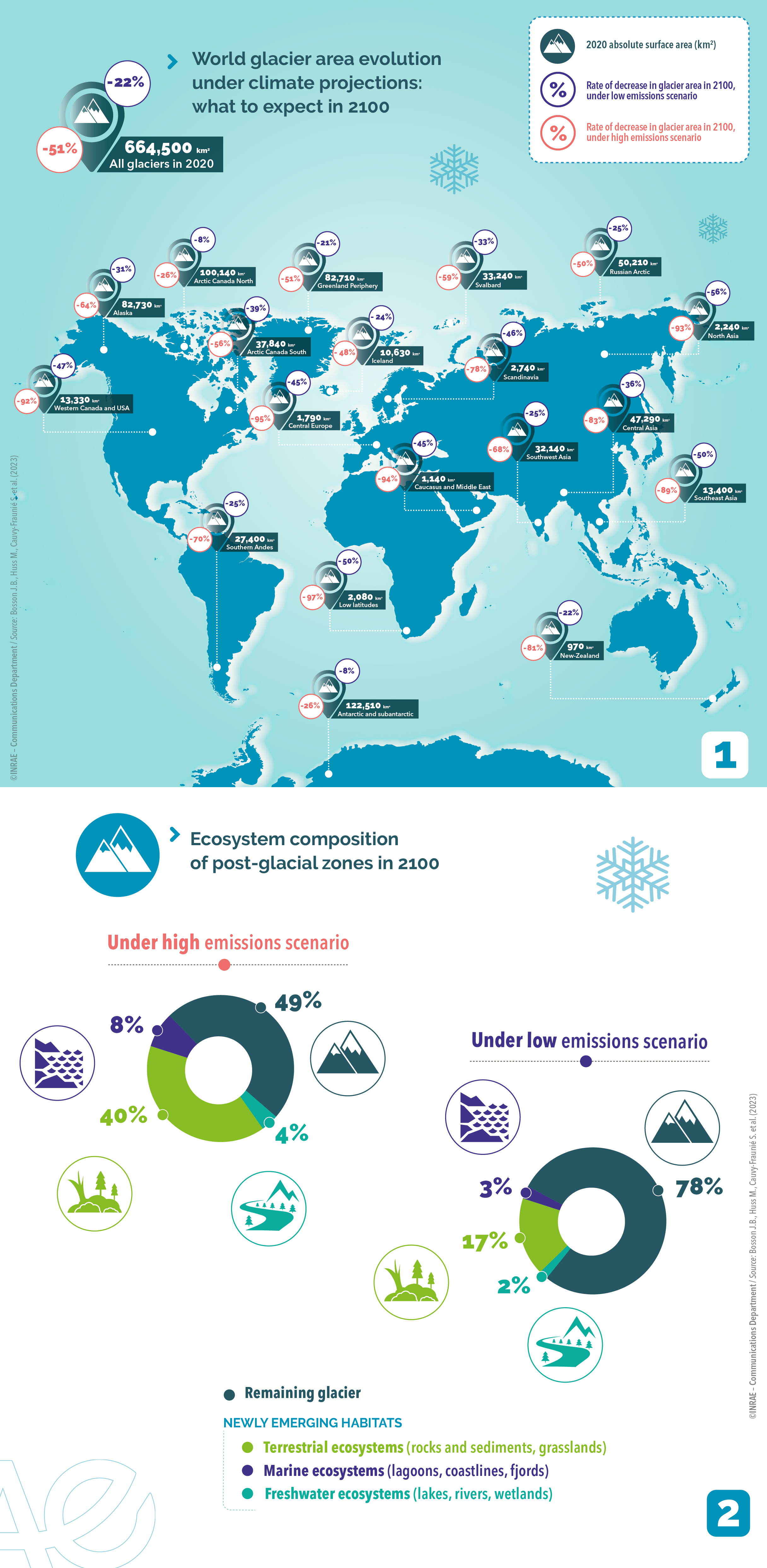Climate change and risks Reading time 2 min
Protecting glaciers to preserve emerging ecosystems
Published on 12 September 2023

This detailed global analysis simulates the evolution of our planet's 210,000 glaciers (excluding the Antarctic and Greenland ice sheets) and its ecological consequences. It also maps and models the topography and air temperatures of areas expected to emerge as glaciers retreat between now and 2100.
Which post-glacial ecosystems will emerge according to climate projections?
By 2100, the total surface area of glaciers (665,000 km2 in 2020) is projected to shrink from approximately 20% to 50%, depending on greenhouse gas emission scenarios. Areas that become ice-free will consist mostly of terrestrial ecosystems (rocks and sediments, grasslands, etc.), but also marine ecosystems (lagoons, coastlines, fjords) and freshwater ecosystems (lakes, rivers, wetlands). Depending on climate projections and regions, these areas will be characterized by extreme environmental conditions, providing refuge for cold-adapted species, or by milder conditions favoring primary productivity and the establishment of generalist species.

How can we limit the impact of climate change on glaciers and post-glacial ecosystems?
Glaciers and post-glacial ecosystems play a major role in mitigating global warming, both through radiation reflection and carbon sequestration. Moreover, they are essential for coping with climate change, by reducing its harmful impacts on freshwater availability, sea levels and biodiversity.
Less than 50% of glacier surface is located in protected areas.
Firstly, citizen mobilization and political action can help curb climate change and limit the loss of the Earth's ice masses.
At the same time, the development of protected areas in these glacial zones, involving local populations, will help preserve these ecosystems and limit anthropogenic threats.
Successful and conclusive actions to preserve these ecosystems
- A citizen initiative in Switzerland called for glacier protection in 2023 to amend national laws and foster positive climate actions.
- International organizations argued in favor of glaciers to promote actions at the opening of the 27th IUCN Conference (International Union for Conservation of Nature) in 2022.
- The French government created a natural habitat protection zone for Mont Blanc in 2020, recognizing the importance of securing the ecological evolution of glaciers and post-glacial zones as a preventive measure.
- Environmental and glacier protection laws have recently been adopted in Argentina and Chile. Further development and extension of these laws to post-glacial areas could increase the protection of these areas on a local, national or continental scale.
With major international appeals and commitments to preserve common goods (IPCC report, UN resolutions, etc.), protecting glaciers and post-glacial ecosystems appears to be a priority and will be a way to address these unprecedented global challenges.
Reference
Bosson J.B., Huss M., Cauvy-Fraunié S. et al. (2023). Future emergence of new ecosystems caused by glacial retreat. Nature, 620 (7974).
https://www.nature.com/articles/s41586-023-06302-2
Research carried out as part of the Ice&Life project, which aims to connect science and nature conservation, civil society, academia and public stakeholders to improve understanding and protection of glaciers and post-glacial ecosystems.
